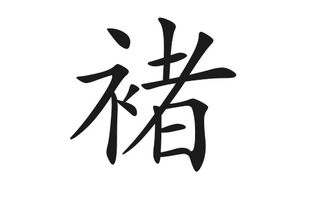Meta Description: Explore the fascinating history of the Chu(chǔ) surname, from ancient market administrators to calligraphy masters. Discover its origins, famous figures, and cultural impact.

The Chu Surname: Origins in Ancient Governance
The Chu surname is one of China’s oldest family names, dating back to the Spring and Autumn Period (771–476 BCE). Its unique origins reflect early Chinese societal structures:
Occupational Roots:
The surname originated from the "Chu Shi" – officials who managed markets and textiles in ancient states like Song and Wei. Their descendants adopted "Chu" as a surname, creating one of China’s few occupation-derived names with unbroken lineage.
Geographical Connection:
Prince Duan of Song was granted the fiefdom of Chu Yi (modern Luoyang, Henan). His heirs became the "orthodox" Chu clan, with historical sites like the Chu Pavilion preserving their legacy.
Unique Fact: Unlike many Chinese surnames, the Chu lineage shows no records of imperial grants or adopted names, earning the saying: "All Chus share one blood."
Legends of the Chu Clan: Icons Through History
Politics & Leadership
Chu Suiliang ( 596–658):Tang Dynasty statesman and calligraphy master. His Wild Goose Pagoda Preface revolutionized Chinese script, praised as "golden characters between jade lines."
Chu Pou (303–350):Jin Dynasty general whose daughter became Empress Chu Suanzi, establishing a model for imperial advisory roles.
Arts & Scholarship
Chu Shaosun (1st century BCE):Scholar who preserved history by supplementing Sima Qian’s Records of the Grand Historian.
Chu Renhuo (1635–1682):Author of Romance of the Sui and Tang, pioneering historical fiction in Chinese literature.
Modern Innovators
Chu Shicheng (1873–1948):Constitutional reformer and co-founder of Jiusan Society.
Chu Shih-Chieh (1928–2019):From "Tobacco King" to "Orange King," his comeback story symbolizes resilient entrepreneurship.
Family Traditions: Values That Shaped a Dynasty
1. Genealogy & Rituals
Maintained strict "30-year minor revision, 60-year major revision" genealogy updates.
Shandong Clan Motto: "Honor family, cherish learning, uphold integrity, value work, avoid conflict."
2. Architectural Heritage
Hunan Chu Ancestral Hall: Tang-era complex featuring 12 stone tablets of Chu Suiliang’s calligraphy.
Xuecheng Chu Temple: Qing Dynasty hall with ceiling murals depicting ancient market administration.
Cultural DNA: Commerce, Art, and Education
Merchant Traditions:
Chu clans pioneered maritime trade along the Silk Road, guided by principles like "global commerce rooted in trust."
Artistic Legacy:
Chu Suiliang’s "Slender Gold" calligraphy style influenced later masters like Yan Zhenqing.
Education Model:
Ming Dynasty clans allocated 30% of business profits to fund schools, producing 27 imperial scholars.
Final Thoughts
The Chu surname’s 26-century journey – from market regulators to calligraphy innovators – showcases how Chinese families have shaped civilization through specialized skills and enduring values.